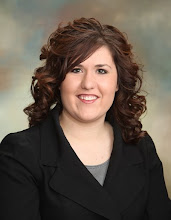1. How important is the set or location to the overall effect of the film?
The set/location of the film is a very important element of the film. It is the set that truly helps viewers take themselves out of their world and enter into the realm that the film is in. For example, if Forest Gump would have been set in the middle of NYC, the entire film would have been changed drastically. In Forest Gump, the creators of the set built a special little “Forest Gump” world. A person of the same caliber growing up in NYC would have never turned out the same as small town Forest did. The setting of a film has four main effect factors: temporal factors (time frame of the film), geographic factors, social structures and economic factors, and customs, moral attitudes, and codes of behavior. As read in chapter four, it is the interpretation of the setting that confirms the belief that our character, destiny, and fate are all determined by elements outside of ourselves; we are solely products of our heredity and environment. The setting also creates the emotional atmosphere and supplies much of the symbolism seen in films.
2. Why do you think this film is shot on this set or at this location? (many movies have one central set and other minor ones. Focus on the main set. If there are many locations, choose one or two of those locations and focus on them.)
The film is shot in one main location because it allows the directors to keep so many naturally varying elements constant (light, sound, color, etc.). For low budget films it is much cheaper to produce a film in a centralized setting. Directors also admire the way that films from the 1930’s and 40’s shot, and a main studio location helps them to replicate this effect. Films, such as American Beauty, that required prolonged filming in residential areas can become very disruptive and movie crews become the target of much neighborhood hostility. If a script justifies/mandates an on-location shoot, then the crew must do so.
3. What is the art director trying to tell you with the costumes chosen for the characters?
Costumes can tell us a lot about when and where the film is taking place and also what is happening during that time period. The art director can display emotion through the costume that the actor wears. For example, if a person is in drab clothing accompanied with the apparent body language of someone who is depressed or sad, the clothing makes the emotion much more apparent than if the actor were dressed in hot pink with the same negative expression. Hitchcock states that unless there is a very specific reason for “eye-catchers” the actors should be dressed in costumes that match the theme of the set. Costumes (along with the set) play a large part in setting and creating a believable fantasy world. Think of it this way, in the movie Shallow Hal (the second movie that I watched for the week), it was the talent of the art director (along with many others) who somehow transformed the beautiful, physically flawless Gwyneth Paltrow into an over-weight, target of societal disappointment. Through it all, Gwyneth’s character still displayed some of Gwyneth’s natural physical attributes. It was incredible to see how realistic Gwyneth's costume was.
4. Is the lighting for the film appropriate? Why/why not? Is it harsh and direct or is it soft and diffused (or somewhere in the middle)? Explain the lighting.
Yes, the lighting for both American Beauty and Shallow Hal were appropriate. In American Beauty, the lighting is a mix between low- and high-key lighting. Over all the lighting tends to be more direct than diffused. In Shallow Hal, the lighting is high-key since it is a comedy (thus that would be the appropriate light setting). For the most part, the character of the light is a cross between harsh and balanced.
5. What is the director trying to tell you with the style of lighting chosen?
The style of lighting used is very important in setting the mood for the film as well as helping to depict the actor’s inner character. The lighting used in American Beauty is very dramatic and paints the intimacy and dramatic intensity of the film. The lighting intensifies the disturbing atmosphere of the film and emphasizes how bizarre the entire situation of the film really is. In Shallow Hal the lighting is intended to be more natural and much less dramatic. By focusing on high-key lighting in this film, there is more complete visual information about the scene and the setting. The lighting depicts Shallow Hal as a very happy, comical film.
6. What colors are prominent? Why? What message is being sent?
In American Beauty the color red is definitely a very prominent and symbolic color used by the screenwriter. According to Why American Beauty Works: Focus on the Use of Symbols by David Freeman, “[the color red] refers to a concept: the life force, which, by nature, tries to defy the suppressiveness of suburban life. That's why, the first time we meet Annette Bening, she's cutting red roses. She's cutting the life force.” For Lester, the color red symbolizes is irrepressible force for sex and his infatuation with Angela. Every time he daydreams of Angela, she is floating in rose petals or in a tub filled with rose petals. Throughout the movie, a vase of red roses is nearly always evident in Lester’s house. The color red is also a symbol for the characters’ individuality and the measures that they will go to to fulfill their individual desires (ex: Lester’s red car). The color red symbolizes a similar element for all the key characters in the film. In general, the color is depicting sex, the declaration of individuality, the soul, and/or transcendence; all examples of the life force.

No comments:
Post a Comment